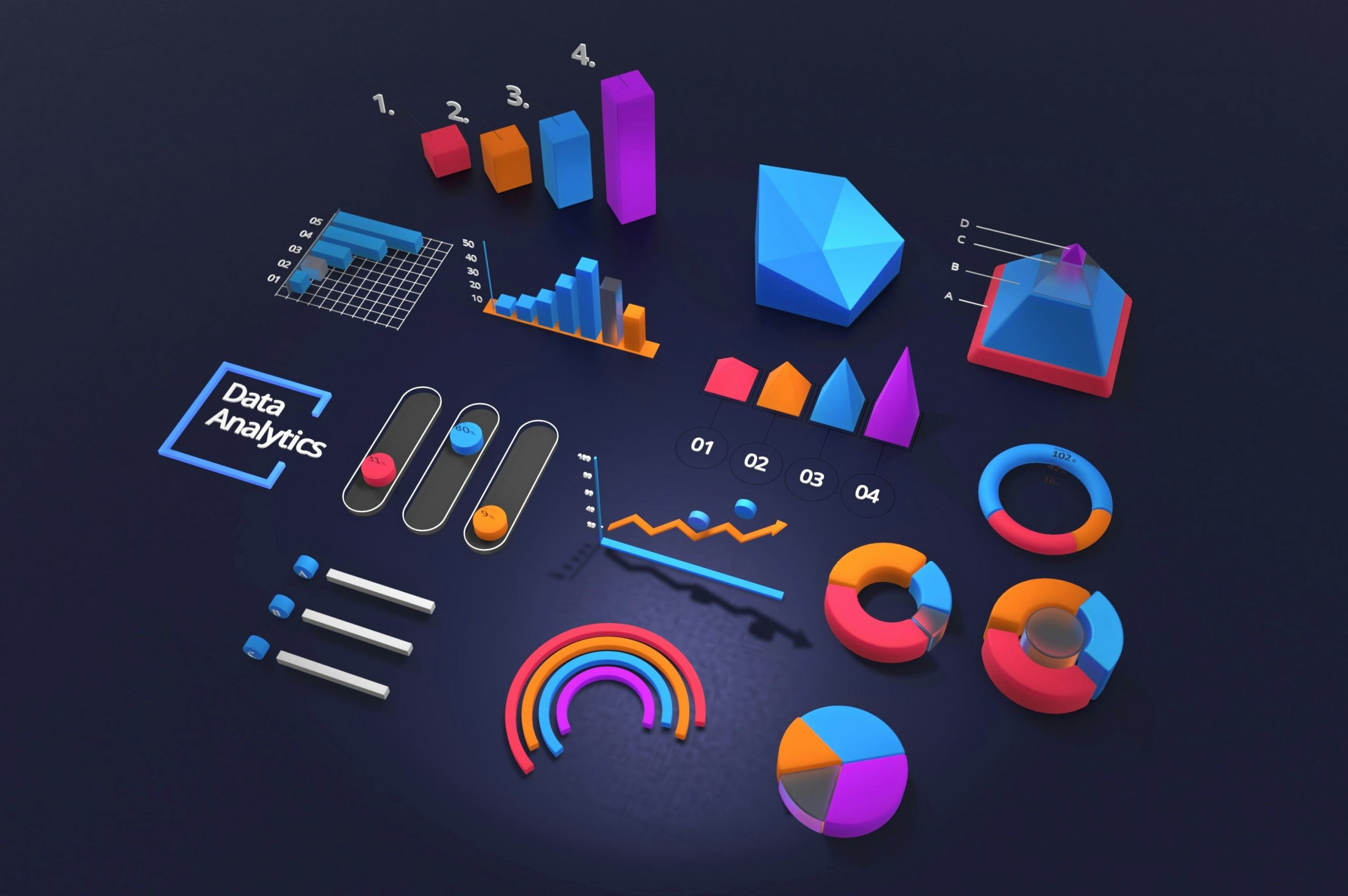Maximizing Data analytics for Business Success .
Table of Contents
Introduction
In today’s data-driven world, the ability to harness and interpret data effectively can be a significant competitive advantage. Businesses are increasingly turning to data analytics and Business Intelligence (BI) tools to glean actionable insights from their vast amounts of data. This article delves into the essentials of these tools, their integration into operational stacks, and how they drive business success through real-world examples.
What are Data Analytics and BI tools?

Data Analytics involves examining data sets to draw conclusions about the information they contain. It includes various techniques such as statistical analysis, predictive modeling, and data mining. These tools are used by many different kinds of businesses, for example, a retail company might use these tools to analyze customer purchase history and demographic data. The tool would clean and organize this data, then use predictive analytics to forecast future buying trends. The results could be displayed in a series of graphs, showing which products are likely to be popular in different demographic segments, aiding the company in inventory planning and targeted marketing campaigns.
Business Intelligence (BI) tools, on the other hand, are designed to help businesses collect, analyze, and present data in an easy-to-understand/really simple format; in order to turn them into actionable insights; often through dashboards and reports.
Business intelligence (BI) and its subsets – business analytics and data analytics – are all data-management solutions used to understand historical and contemporary data and create insights. However, there is a difference between these solutions and knowing which one is right for your business involves understanding the distinctions between them all. BI, data analytics and business analytics are subtle, and to make things more confusing, the terms are often used interchangeably. Before we clarify the differences, let’s begin with some simple definitions.
Business intelligence is really the process of collecting, storing & analyzing data from business operations. BI provides comprehensive business metrics in near-real time to support better decision making. With better business intelligence, you can create performance benchmarks, spot market trends, increase compliance and improve almost every aspect of your business.
Business analytics (BA) refers to the practice of using your company’s data to anticipate trends and outcomes. BA includes data mining, statistical analysis and predictive modeling that help make more informed decisions.
Data analytics is the technical process of mining data, cleaning data, transforming data and building the systems to manage data. Data analytics takes large quantities of data to find trends and solve problems. Data analytics is used across disciplines – from government to science. It’s not just confined to business applications.
Key Data Analytics Tools
In this article we will be focusing mainly on top data analytic tools. Some of them include:
Apache Hadoop

– Overview: Apache Hadoop is an open-source framework that allows for the distributed processing of large data sets across clusters of computers.
– Features: Scalability, fault tolerance, and flexibility in handling various data types.
– Use Case: Financial institutions use Hadoop to detect fraud and manage risk by analyzing large volumes of transactional data in real time.
R Programming

– Overview: R is a programming language and software environment used for statistical computing and graphics.
– Features: Extensive library of statistical and graphical methods, active community support, and integration with other data management tools.

– Use Case: Healthcare organizations use R to analyze patient data and predict disease outbreaks, improving public health responses.
Python

– Overview: Python is a versatile programming language widely used for data analytics due to its simplicity and powerful libraries like Pandas, NumPy, and Scikit-learn.
– Features: Easy to learn, extensive libraries for data manipulation and machine learning, and strong community support.
– Use Case: E-commerce companies use Python to personalize shopping experiences by analyzing customer behavior and recommending products.
SAS

– Overview: SAS (Statistical Analysis System) is a software suite developed for advanced analytics, multivariate analysis, business intelligence, and data management.
– Features: Robust analytics capabilities, user-friendly interface, and strong data management tools.
– Use Case: Government agencies use SAS to analyze social and economic data, aiding in policy-making and resource allocation.
IBM SPSS

IBM SPSS (Statistical Package for the Social Sciences) is a software package used for statistical analysis.
– Features: Comprehensive statistical tools, ease of use, and integration with other IBM analytics solutions.
– Use Case: Academic institutions use SPSS for educational research, analyzing student performance data to improve teaching methods.
How to Integrate Data Analytics Tools into Your Operational Stack
Here are the steps you need to take in order to integrate Data analytic tools into your operational stack:
1. Identify Objectives: Clearly define what you aim to achieve with data analytics tools, whether it’s improving customer retention, optimizing operations, or increasing sales.
2. Choose the Right Tools: Select tools that align with your business needs and existing technology infrastructure.
3. Data Collection and Preparation: Ensure your data is clean, structured, and ready for analysis. This often involves data warehousing solutions.
4. Training and Adoption: Train your team to use these tools effectively. Adoption is crucial for maximizing the benefits of analytics.
5. Continuous Monitoring and Improvement: Regularly review your analytics reports to make informed decisions and improve your strategies.
Real-World Examples/applications of data analytic tools
The Retail Industry
– Company: Walmart
– Tool: Apache Hadoop
– Outcome: Walmart uses Hadoop to analyze vast amounts of sales data, optimizing product placements, pricing strategies, and inventory management. This has led to increased sales and better customer satisfaction.
Financial Services
– Company: JPMorgan Chase
– Tool: Python
– Outcome: JPMorgan Chase leverages Python for its risk management system, analyzing financial data to predict market trends and minimize risks.
The Healthcare Sector
– Company: Mayo Clinic
– Tool: R Programming
– Outcome: Mayo Clinic uses R to analyze patient data, improving diagnostic accuracy and treatment outcomes.
Impact of Data Analytics and BI on Business Success
The impact of BI and data analytics especially cannot be overemphasized. Having organized data as a business at your fingertips will lead to:
- Improved Decision-Making
Using data analytics tools provides real-time insights and data-driven strategies that enhance decision-making capabilities. For example, predictive analytics can help businesses anticipate market trends and customer behavior, allowing for proactive strategy adjustments.
- Increased Operational Efficiency
Identifying bottlenecks and inefficiencies through data analytics leads to streamlined operations. For instance, manufacturing companies can use data analytics to optimize production processes, reducing waste and improving product quality.
- Customer Insights
Understanding customer behavior and preferences helps tailor marketing campaigns and improve customer service. For example, retail businesses can analyze purchase patterns to offer personalized recommendations, increasing customer satisfaction and loyalty. A good example of this would be the tailored ads we see on our phones when we shop from certain websites.
- Competitive Advantage
Businesses that leverage data effectively can outpace competitors by quickly adapting to market changes and emerging trends. For instance, tech companies using advanced data analytics can innovate faster and stay ahead in a rapidly evolving industry.
In conclusion, incorporating data analytics and BI tools into your operational stack is no longer optional but a necessity for staying competitive. Tools like Apache Hadoop, R programming, IBM SPSS, etc offer powerful capabilities to transform raw data into actionable insights, driving business success. By following a structured integration approach and continuously leveraging these insights, businesses can achieve significant improvements in decision-making, operational efficiency, and overall performance.
References
- The Best Data Analytics Tools Of 2024 – Forbes Advisor
- How to Integrate Power BI with Microsoft Tools for Data Analysis? – analyticsinsight.net
- Webinar: Empowering the Data Driven Business with Modern Business Intelligence – DATAVERSITY
- Top 24 tools for data analysis and how to decide between them | Stitch







